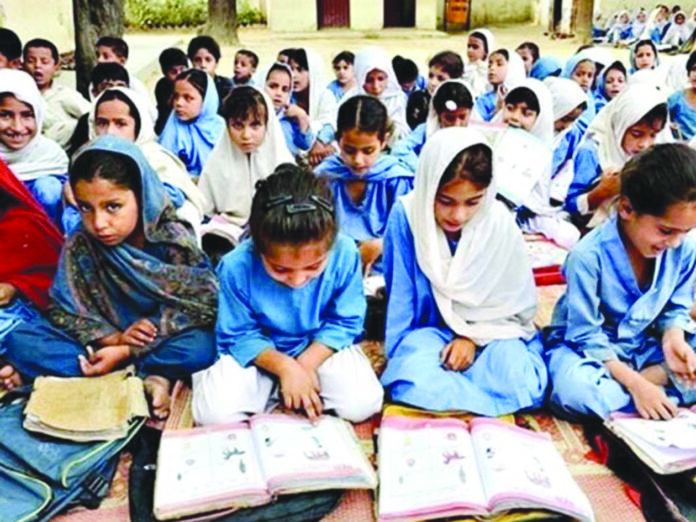Education is crucial for global growth and prosperity, empowering people and promoting social and economic advancement. Pakistan faces a poverty cycle due to structural issues in its educational system. Countries like Sweden, Denmark, and Luxembourg have set the international standards for education, with Luxembourg leading in spending per student. Sweden and the United States follow closely behind. Luxembourg also tops the list for postsecondary education, followed by Austria and Norway. These countries recognize the value of investing in education as a wise investment for the future.
Different levels of education spending often reflect governments’ priorities and strategies. While some of the countries allocate more funding per secondary student compared to primary students, more countries prioritize primary education expenditure. Canada, Norway, Netherlands, Japan, Austria, Finland, Chile, Iceland, Australia, France, the USA and the UK are among those investing more per primary student, despite the typical correlation between teachers’ salaries and the level of education. Moreover, beyond financial metrics, it’s essential to consider broader indicators of skills readiness and adaptability. The World Economic Forum’s Global Competitiveness report assesses workforce preparedness, with Switzerland earning top marks in this domain. Germany, Finland, and Denmark also demonstrate high levels of skills readiness.
In Pakistan, on the other hand, the situation is dire. A staggering 30 million children are deprived of their fundamental right to education. The terrible fact concerning our educational system is that one-third of students quit school before completing the primary cycle, with a dropout rate of 33%. Poverty serves as a significant barrier to education access, perpetuating a cycle of deprivation and marginalization. While poverty undoubtedly plays a significant role, it’s essential to scrutinize the efforts of the government in addressing this pressing issue. The overarching aim of the Sustainable Development Goals (SDGs) is to ensure inclusive, equitable, and high-quality education, particularly at the primary level. Under the SDGs, Pakistan has committed to ensuring inclusive and equitable quality education for all by 2030. However, achieving this ambitious goal demands concrete actions and robust investments in education infrastructure, teacher training, and curriculum development. Unfortunately, progress in this effect has been slow and inadequate, with the education sector receiving a disproportionately low share of the national budget. This disparity between Pakistan’s education spending and the magnitude of its education challenges underscores the urgent need for increased investment and policy reforms.
According to GDP percentages for South Asia, Bhutan spends the most (8.1%), followed by India (5.1%), Maldives (4.9%), Nepal (4%), and Sri Lanka (1.4%). However, Pakistan emerges as a concern in terms of education expenditure, allocating only 2% of its GDP to education. This low allocation raises questions about Pakistan’s ability to address the pressing challenges facing its education sector, including access, quality, and equity. With 44% of the overall population in the 5–16 age range not attending school, Pakistan suffers from one of the worst rates of educational exclusion in the world, with the second-highest percentage of out-of-school children in the world, after Nigeria. Geographical, gender, and socioeconomic class variations are also significant, according to UNICEF data. Whereas 78% of females in Balochistan do not attend school, 52% of the poorest children in Sindh do not go to school. At the basic level, there are around 10.7 million boys and 8.6 million girls enrolled at the lower secondary level, with 3.6 million boys and 2.8 million girls. One of the main obstacles to education access is gaps in the services offered at all educational levels. A number of supply-side obstacles, including the availability of school facilities, economic considerations, and sociocultural demand-side impediments make it difficult for some marginalised groups, especially teenage females, to enrol in and remain in school. Establishing a reliable data system and monitoring procedures to keep track on retention and stop kids from dropping out is biggest challenge.
The integration of technology into education is emerging as a promising trend, underscoring the importance of teacher training and quality. The private sector plays a significant role in primary education delivery or support alongside government initiatives. A UNESCO study finds that South Asia has the highest scale of private engagement in primary education of any region, with Pakistan more than 33%. This has led to the emergence of education technology companies, high levels of private enrolment in elementary and secondary schools, and private tutoring. Even with speedier access to education, South Asia’s learning levels are still more than one-third behind the global average and slower than anywhere else in the globe. It recommends that a single framework be used to oversee all public and private educational activities.
Pakistan’s educational landscape is marred by a plethora of challenges, ranging from poverty and inadequate infrastructure to gender disparities, all of which present formidable barriers to progress. Despite the National Education Policy’s commendable focus on budget enhancement, quality improvement, and community mobilization, deeply ingrained issues like child labour, early marriage, and outdated curricula persist, undermining efforts and perpetuating poor learning outcomes and high dropout rates. The ambitious goal of achieving Universal Primary Education (UPE) by 2030 demands unwavering governance, active community involvement, and robust political will. To surmount these challenges, targeted interventions are imperative, including comprehensive support for financially struggling families, enhancements in teacher quality, and initiatives aimed at empowering girls. Ultimately, realizing the untapped potential of Pakistan’s youth and charting a course toward a brighter future necessitates collaborative action among the international community, governmental bodies, and civil society.























